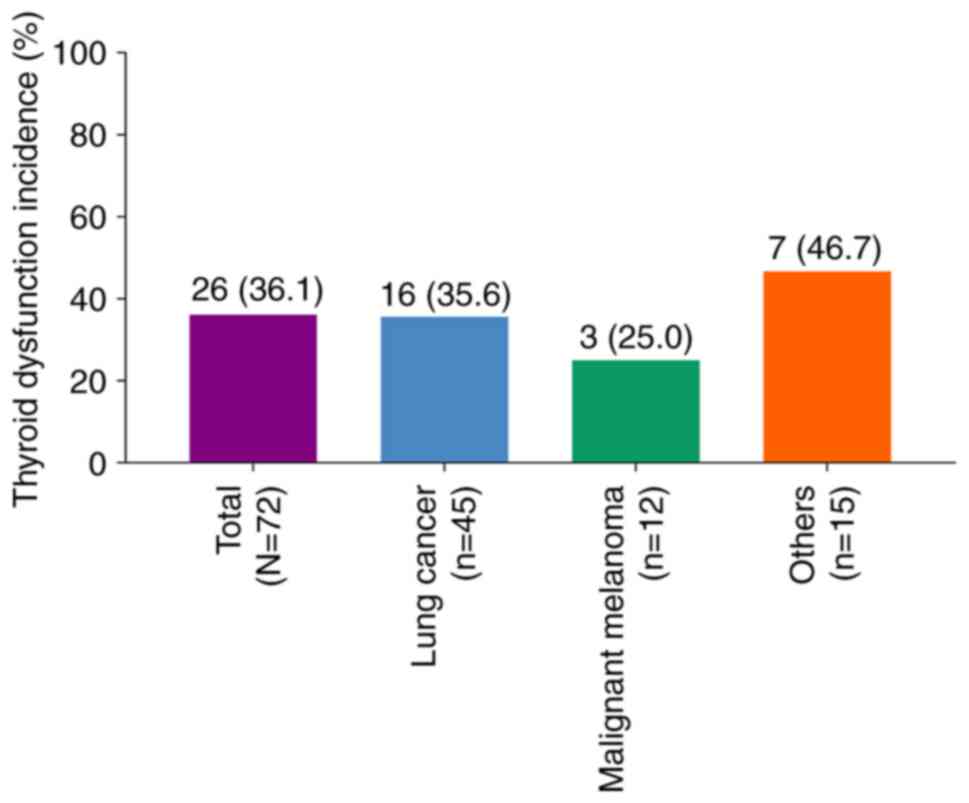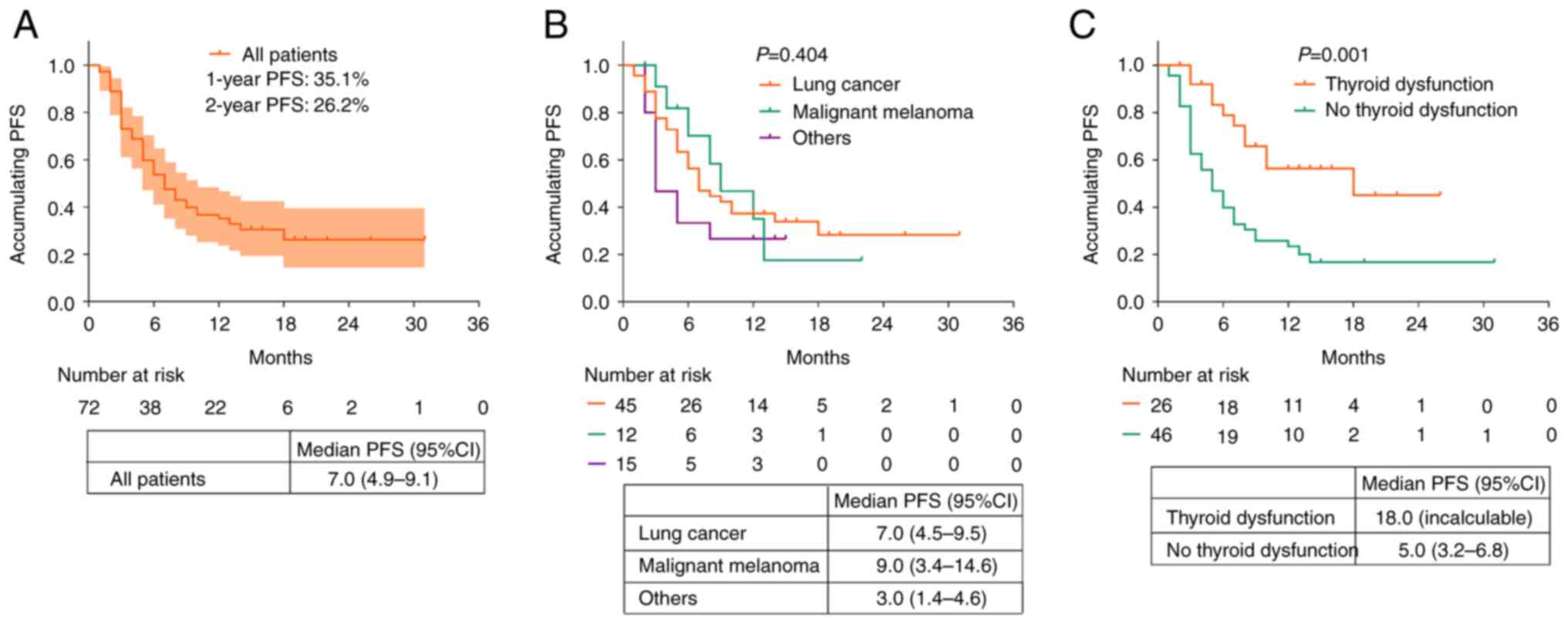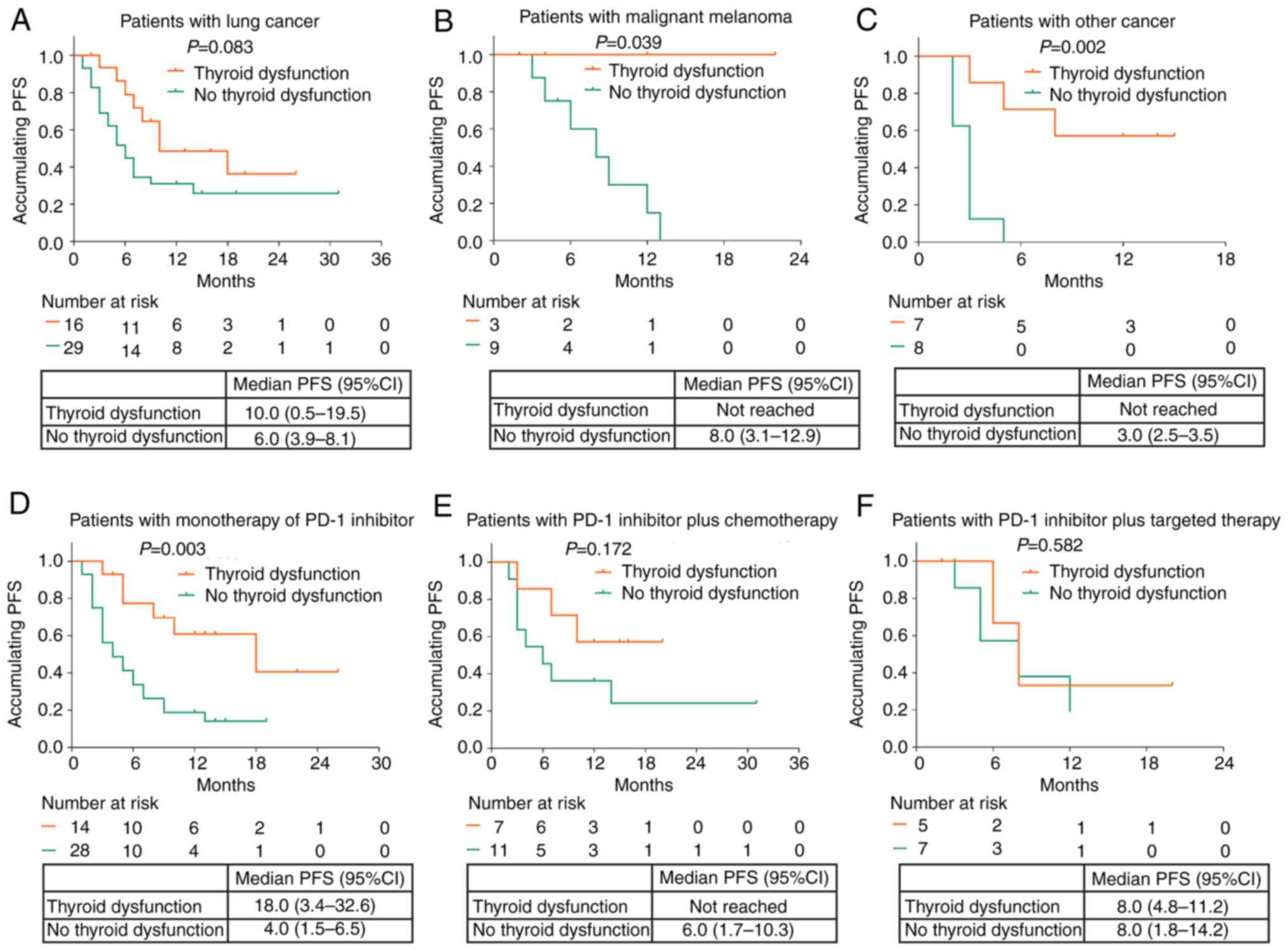|
1
|
Jiang Y, Chen M, Nie H and Yuan Y: PD-1
and PD-L1 in cancer immunotherapy: Clinical implications and future
considerations. Hum Vaccin Immunother. 15:1111–1122. 2019.
View Article : Google Scholar : PubMed/NCBI
|
|
2
|
Ai L, Xu A and Xu J: Roles of PD-1/PD-L1
pathway: Signaling, cancer, and beyond. Adv Exp Med Biol.
1248:33–59. 2020. View Article : Google Scholar
|
|
3
|
Han Y, Liu D and Li L: PD-1/PD-L1 pathway:
Current researches in cancer. Am J Cancer Res. 10:727–742.
2020.PubMed/NCBI
|
|
4
|
Kythreotou A, Siddique A, Mauri FA, Bower
M and Pinato DJ: Pd-L1. J Clin Pathol. 71:189–194. 2018. View Article : Google Scholar
|
|
5
|
Ni JM and Ni AP: Landscape of PD-1/PD-L1
regulation and targeted immunotherapy. Chin Med Sci J. 33:174–182.
2018.PubMed/NCBI
|
|
6
|
Gou Q, Dong C, Xu H, Khan B, Jin J, Liu Q,
Shi J and Hou Y: PD-L1 degradation pathway and immunotherapy for
cancer. Cell Death Dis. 11:9552020. View Article : Google Scholar : PubMed/NCBI
|
|
7
|
Sun C, Mezzadra R and Schumacher TN:
Regulation and function of the PD-L1 checkpoint. Immunity.
48:434–452. 2018. View Article : Google Scholar : PubMed/NCBI
|
|
8
|
Xie W, Medeiros LJ, Li S, Yin CC, Khoury
JD and Xu J: PD-1/PD-L1 pathway and its blockade in patients with
classic hodgkin lymphoma and non-hodgkin large-cell lymphomas. Curr
Hematol Malig Rep. 15:372–381. 2020. View Article : Google Scholar : PubMed/NCBI
|
|
9
|
Wu X, Gu Z, Chen Y, Chen B, Chen W, Weng L
and Liu X: Application of PD-1 blockade in cancer immunotherapy.
Comput Struct Biotechnol J. 17:661–674. 2019. View Article : Google Scholar : PubMed/NCBI
|
|
10
|
Feng M, Xiong G, Cao Z, Yang G, Zheng S,
Song X, You L, Zheng L, Zhang T and Zhao Y: PD-1/PD-L1 and
immunotherapy for pancreatic cancer. Cancer Lett. 407:57–65. 2017.
View Article : Google Scholar
|
|
11
|
Hayashi H and Nakagawa K: Combination
therapy with PD-1 or PD-L1 inhibitors for cancer. Int J Clin Oncol.
25:818–830. 2020. View Article : Google Scholar
|
|
12
|
Salmaninejad A, Valilou SF, Shabgah AG,
Aslani S, Alimardani M, Pasdar A and Sahebkar A: PD-1/PD-L1
pathway: Basic biology and role in cancer immunotherapy. J Cell
Physiol. 234:16824–16837. 2019. View Article : Google Scholar
|
|
13
|
D'Andrea G, Lassalle S, Guevara N, Mograbi
B and Hofman P: From biomarkers to therapeutic targets: The promise
of PD-L1 in thyroid autoimmunity and cancer. Theranostics.
11:1310–1325. 2021. View Article : Google Scholar
|
|
14
|
Manolis AA, Manolis TA, Melita H and
Manolis AS: Subclinical thyroid dysfunction and cardiovascular
consequences: An alarming wake-up call? Trends Cardiovasc Med.
30:57–69. 2020. View Article : Google Scholar : PubMed/NCBI
|
|
15
|
Chalan P, Di Dalmazi G, Pani F, De Remigis
A, Corsello A and Caturegli P: Thyroid dysfunctions secondary to
cancer immunotherapy. J Endocrinol Invest. 41:625–638. 2018.
View Article : Google Scholar
|
|
16
|
Osorio JC, Ni A, Chaft JE, Pollina R,
Kasler MK, Stephens D, Rodriguez C, Cambridge L, Rizvi H, Wolchok
JD, et al: Antibody-mediated thyroid dysfunction during T-cell
checkpoint blockade in patients with non-small-cell lung cancer.
Ann Oncol. 28:583–589. 2017. View Article : Google Scholar
|
|
17
|
Basak EA, van der Meer JWM, Hurkmans DP,
Schreurs MWJ, Oomen-de Hoop E, van der Veldt AAM, Bins S, Joosse A,
Koolen SLW, Debets R, et al: Overt thyroid dysfunction and
anti-thyroid antibodies predict response to anti-PD-1 immunotherapy
in cancer patients. Thyroid. 30:966–973. 2020. View Article : Google Scholar : PubMed/NCBI
|
|
18
|
Wolffenbuttel BHR, Wouters HJCM, Slagter
SN, van Waateringe RP, Muller Kobold AC, van Vliet-Ostaptchouk JV,
Links TP and van der Klauw MM: Thyroid function and metabolic
syndrome in the population-based LifeLines cohort study. BMC Endocr
Disord. 17:652017. View Article : Google Scholar : PubMed/NCBI
|
|
19
|
Sakakida T, Ishikawa T, Uchino J, Chihara
Y, Komori S, Asai J, Narukawa T, Arai A, Kobayashi T, Tsunezuka H,
et al: Clinical features of immune-related thyroid dysfunction and
its association with outcomes in patients with advanced
malignancies treated by PD-1 blockade. Oncol Lett. 18:2140–2147.
2019.
|
|
20
|
Endo K, Masatani T, Tsuji A, Kondo S,
Wakisaka N, Murono S and Yoshizaki T: Thyroid dysfunction after
intra-arterial chemotherapy for hypopharyngeal and laryngeal
cancer. Auris Nasus Larynx. 42:231–234. 2015. View Article : Google Scholar : PubMed/NCBI
|
|
21
|
Breimer LH, Nousios P, Olsson L and
Brunnström H: Immune checkpoint inhibitors of the PD-1/PD-L1-axis
in non-small cell lung cancer: Promise, controversies and
ambiguities in the novel treatment paradigm. Scand J Clin Lab
Invest. 80:360–369. 2020. View Article : Google Scholar
|
|
22
|
Zhou Y, Xia R, Xiao H, Pu D, Long Y, Ding
Z, Liu J and Ma X: Thyroid function abnormality induced by PD-1
inhibitors have a positive impact on survival in patients with
non-small cell lung cancer. Int Immunopharmacol. 91:1072962021.
View Article : Google Scholar
|
|
23
|
Chmielewska I, Dudzińska M, Szczyrek M,
Świrska J, Wojas-Krawczyk K and Zwolak A: Do endocrine adverse
events predict longer progression-free survival among patients with
non-small-cell lung cancer receiving nivolumab? PLoS One.
16:e02574842021. View Article : Google Scholar : PubMed/NCBI
|
|
24
|
Frelau A, Jali E, Campillo-Gimenez B,
Pracht M, Porneuf M, Dinulescu M, Edeline J, Boussemart L and
Lesimple T: Prognostic impact of thyroid dysfunctions on
progression-free survival in patients with metastatic melanoma
treated with anti-PD-1 antibodies. Melanoma Res. 31:208–217. 2021.
View Article : Google Scholar : PubMed/NCBI
|

















